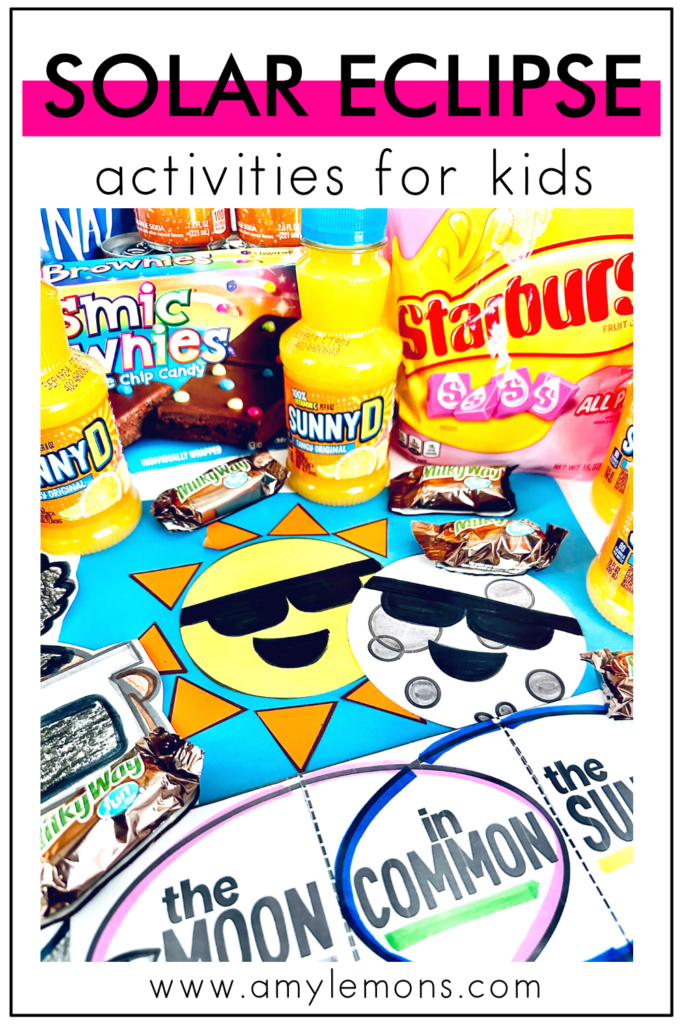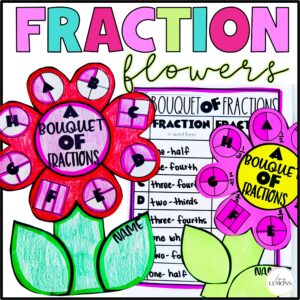
Are you ready to ignite your students’ curiosity about the wonders of a solar eclipse? There is just something so fascinating about witnessing the phenomenon of a solar eclipse. But how do you explain a solar eclipse to a child? You’d be amazed at how easily they catch on when you incorporate hands-on solar eclipse activities that teach students how a solar eclipse works.
Whether you are in the path of totality or not, there is so much excitement surrounding the natural spectacle! Let’s look at how we can engage our little learners while teaching the science behind the solar eclipse.
| Teach students about the solar eclipse with interactive reading activities and crafts inside the Solar Eclipse Activities unit. |
{Disclaimer: Affiliate links have been used in this post, but I only share items I use and enjoy!}
Before engaging in activities about a solar eclipse, we first must dive deeper into the science behind them. As a class, you can read an informational text that explains the content on their level and engage in meaningful discussion.
Teaching students about the solar eclipse requires much more than a simple definition. An informational text helps expand on the definition to provide relevant terms and examples that kids can understand.
Not only can you dive into the science behind the solar eclipse, but you can talk about how people prepare for the solar eclipse, like purchasing special solar eclipse glasses.
For a more in-depth introduction to the solar eclipse, you can incorporate additional nonfiction and/or fiction solar eclipse books that explore the topic. Here are a few suggestions:
To understand a solar eclipse better, we must first understand the Sun and the Moon. Chances are, students have some knowledge about the Sun and the Moon. We can continue to build on that knowledge so that students understand better as they learn more and, if they’ll be viewing when the solar eclipse occurs.
There are a couple of ways students can explore their background knowledge of the Moon and Sun. Students can use a graphic organizer to sort through the information they know about the Sun and Moon and things learned from the informational text.
We can take this a step further. Using a flapbook, students can compare the moon and the sun. Each of these activities helps to achieve an understanding of how these two work together during a solar eclipse.
After students have gained new information, it is time to demonstrate that understanding. Pair an informational student reader with a graphic organizer. The informational student reader is an easier-to-understand version of the class informational text.
Students can use it to locate and record solar eclipse facts as they are reading it on their own. Not only is this a great way to practice finding facts and conducting research, but students can remember these elements when the event occurs.
It’s no surprise that I found a whole slew of solar snacks to go along with these activities. I went to the grocery store and perused the aisles to find any and every snack that gave off the galaxy vibe. Of course, you don’t need any or every single one of these, but here are some ideas if you’d like to incorporate solar snacks into your solar eclipse studies.
We’ve enhanced our comprehension, built background knowledge, and found facts. Now, it’s time to create a solar eclipse craft.
The Sun and the Moon do something very special during a solar eclipse. The Moon passes between the Sun and Earth, casting a shadow on Earth that either fully or partially blocks the Sun’s light in some areas.
Students use their craft to show how the Sun and the Moon come together to create this very unique event for our Earth!
This visual serves as a frame of reference for what they’ve learned about the solar eclipse. Often, it’s easier to understand a phenomenon when you can see it. The solar eclipse craft is a fun way to recreate and understand how it all works. After making their craft, students can sort through additional facts about the solar eclipse.
Either before or after viewing the solar eclipse (or learning about it), students draw themselves as solar eclipse viewers! If they were able to view the sun momentarily disappear, casting a shadow over the Earth, they could write about that experience. If not, they can write about what they expect to see when an eclipse occurs.
This reflective exercise helps sum up everything they’ve learned and, if they can view the eclipse, it’s a fun way to memorialize their experience.
Ready to bring the Solar Eclipse fun into the classroom? Every activity mentioned in this post can be found in our Solar Eclipse Activities, Craft, and Nonfiction Reading unit! This Solar Eclipse Resource has an informational text, student reader, craft, directed drawing, and graphic organizers.

This Solar Eclipse Resource has an informational text, student reader, craft, directed drawing, and graphic organizers.


Hey, y’all! My name is Amy Lemons and I am passionate about providing students with both engaging and effective standards-based Math and ELA lessons.

Sample a day of Rooted in Reading with these lesson plans and activities for Reading Comprehension, Vocabulary, and Grammar!


